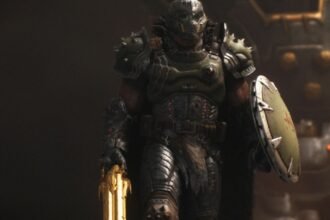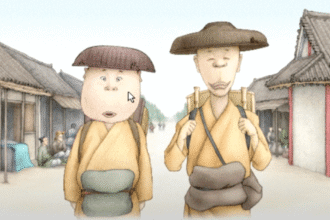I have a complicated relationship with Stranger Things. Like many of my friends, I was enchanted by the first season, but my enthusiasm has dwindled with each subsequent one. The series includes elements I love—coming-of-age themes paired with supernatural adventures—but as its story has expanded, those compelling aspects have become overshadowed by unnecessary plots and increasingly confusing character arcs.
So, I approached the Broadway prequel, Stranger Things: The First Shadow, with skepticism. Was a story about Henry Creel, who transforms into Vecna, really necessary? While I’d heard praise for the stage production’s special effects, I wasn’t sure they would alleviate my discontent with the franchise.
Surprisingly, Stranger Things: The First Shadow captivated me. The special effects indeed are spectacular, but the play also embodies the charm and suspense of the series’ inaugural season by honing in on a small group of teenagers and delivering genuine thrills. It reminded me why I fell in love with Stranger Things in the first place.
[Ed. note: This post contains some setup spoilers for Stranger Things: The First Shadow.]
Written by Kate Trefry, a scriptwriter for the Netflix series, The First Shadow unfolds in 1959, 24 years prior to the events of Stranger Things. Young Henry Creel (Louis McCartney) has just relocated to Hawkins, Indiana, with his family, hoping for a fresh beginning following a violent incident in their former town that left a neighbor blinded.
At Hawkins High School, Henry encounters familiar faces like Joyce (Alison Jaye), Hopper (Burke Swanson), and Bob Newby (Juan Carlos), along with other vaguely known names. (Those familiar will recognize the parents of several major younger characters from the Netflix series, including my favorite, Eddie Munson.) He quickly befriends Patty Newby (Gabrielle Nevaeh), Bob’s adopted sister, as they bond over their shared love for the radio series Captain Midnight and their feelings of alienation within their families.
Much like the first season, The First Shadow thrives by centering on a core group of teenagers and balancing their relatable dilemmas with supernatural conflicts. This interplay makes the terrifying elements—like Henry’s disturbing nightmares, the encroachment of the Upside Down into reality, and a series of neighborhood pet murders—more impactful as they’re contrasted with everyday struggles, such as Joyce’s passion for a rogue theater production and Hopper’s and Patty’s conflicts with their parents, as well as the budding teenage romances. Henry’s gradual descent into the Upside Down elicits deeper sympathy when we glimpse the life possibilities that vanish before him: shyly sharing a soda with his crush and aiding her search for her missing mother.
As his tragic journey unfolds, we see the weight of lost opportunities become even more poignant, especially when Dr. Brenner (Alex Breaux) enters the fray, determined to manipulate Henry into a weapon. While his portrayal might stray from the cold, calculating nature seen in the show, discounting his presence would be a mistake. The lab scenes evoke chilling terror, especially as McCartney skillfully embodies Henry’s struggle and physical pain as he grapples with his burgeoning powers.
The tension escalates as rumors about Henry’s dark past circulate, and the atmosphere thickens with palpable fear each time he experiences emotional turmoil. The intensity of The First Shadow surpasses that of the Netflix series; witnessing Vecna’s horrifying acts not on a screen, but right in front of us, amplifies the dread significantly. This production opts for evoking fear through suspense rather than resorting to gratuitous gore.
The portrayal of Henry Creel introduces complexity to his character that some viewers may find controversial, primarily due to season 4’s depiction of him as a misanthropic figure. However, this development drew me in more. We already know how his journey concludes, but watching him grapple with the darkness encroaching upon him—and witnessing his near-escape thanks to those who try to help him—enhances his character’s nuance. The dichotomy of the Upside Down’s portrayal of good and evil—a realm filled with indiscriminate monsters contrasted with Henry’s internal struggle—transforms him from a mere antagonist into a well-rounded character.
This new perspective on the adult characters enriches the Hawkins narrative, adding depth while avoiding the pitfalls of excessive backstory that often mar prequels.
There are some contrived elements, like the drama production that feels somewhat forced, though it effectively underscores Joyce’s aspirations of scholarship and escape from Hawkins—the additional layer gives insight into her character beyond that of a frantic mother wholly dedicated to her children.
At times, the show leans into overly self-referential humor, exemplified by the line “Bob Newby, superhero.” Yet, despite these moments, I found myself forgiving the contrived elements as they coalesced into a cohesive narrative. Joyce, Hopper, and Bob’s character developments, alongside Henry’s, add depth to their interactions in the









